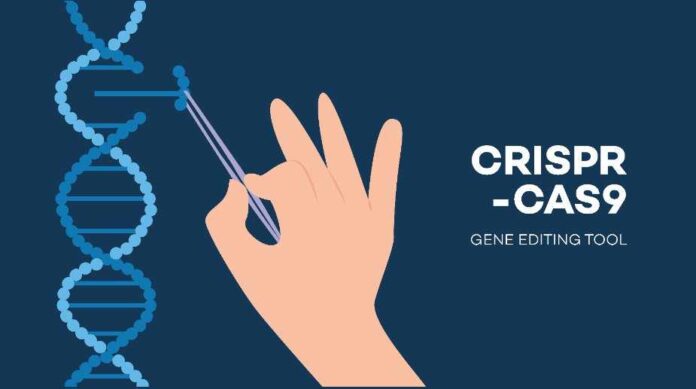Discussions of the essential drawbacks to mRNA and other gene-edited vaccines were probably never held in the cabinet offices. They should have been.
A study just published in PNAS1, one of the world’s most-cited and comprehensive multidisciplinary scientific journals, showcases the fundamental obstacles to the safety of CRISPR gene intervention, which lies at the heart of novel biotechnology.
The authors of “CRISPR-Cas9 editing of the arginine–vasopressin V1a receptor produces paradoxical changes in social behavior in Syrian hamsters” engineered a type of hamster known as Avpr1a KO which was altered to completely lack a key signaling mechanism in a brain circuit that was thought to increase the expression of social communication and aggression.
Unexpectedly, however, Avpr1a KO hamsters displayed more, not less, social communication behavior and aggression toward their peers than did natural non-engineered littermates.
In other words, contrary to expectations, the engineered hamsters displayed increased asocial aggressive behaviour—they were psychologically altered and impaired.
We have written extensively about the possibility of psychological impairment due to mRNA vaccination here and here. This is difficult to investigate with human subjects because of the obvious ethical and safety issues.
The study of hamsters illustrates what can and does go wrong. There are a number of obvious points to the study which illustrate the risks:
- Genetic editing always results in collateral damage. The Avpr1a receptor performs not just one function but many, including, for example, a blood pressure regulation function that was absent in the engineered strain.
- Our understanding of the relationship between biomolecular processes and psychological behaviour is primitive and unreliable. Prior understanding of how the Avpr1a receptor mediates social behaviour was found to be incorrect.
The Effect of Gene-editing on DNA
When considering the effect of gene-editing of DNA, we have to consider three areas of effects, Structure, Function, and Communication.
The hamster study indicates that even without actual structural DNA editing, the alteration of wider functional and communication pathways, as happens to the immune system due to mRNA vaccination, could be sufficient to alter psychological states.
This study underlines the fact that commercial promoters of universal mRNA vaccination are ignoring key safety considerations. Psychological states and functions result not from single isolated genes or biomolecular pathways but from the structure and function of the physiological system as a whole.
Edit one building block of the epigenetic system, and you risk undermining psychological stability.
There have been puzzling aggressive features of psychosocial behaviour during the pandemic. These have disrupted families, coerced dissenters (even those with prior vaccine injuries), and blamed the unvaccinated despite ample evidence to the contrary.
These reactions have often been as if ‘switched on’ suddenly—a good scientific indication that a novel cause should be sought.
Genetic and epigenetic editing results in sudden and absolute changes in function. How on earth were our government and its medical advisors able to ignore the risks?
More importantly, once the rate and extent of adverse effects and the ineffectiveness of mRNA vaccination became obvious through the data that was being collected, why did the government irrationally seek to hide the facts from the public?
Like the Avpr1a KO hamsters, are they, by this point, deterministically constrained by invasive gene-edited biomolecular techniques to exhibit only aggressive tendencies?
In other words, does our government no longer have any capacity for rational choice in the matter? No. Recipients of mRNA vaccines have not had their genome edited, but the epigenetic environment of the genome has been constrained; this may have had psychological impacts. Mind and body are connected more intimately than we realise.
The potential dangers are unquantified and uncertain but in no way insignificant. Genetic techniques are operating at a subtle but very powerful level of the physiology which determines responses throughout its biomolecular network.
THE CONSEQUENCES CAN BE FAR MORE FAR REACHING THAN WE IMAGINE.
It is well understood that many medicines have psychological consequences, mostly, these are temporary, or they can be reversed. The problem with gene therapy techniques is that their effects are destabilising and irreversible.
It has been a huge miscalculation to assume that the safety parameters involved with mRNA vaccines can be equated with those governing traditional vaccines.
1The Proceedings of the National Academy of Sciences (PNAS), is a peer reviewed journal of the National Academy of Sciences (NAS). It is highly respected and viewed by many as an authoritative source of high-impact, original research that broadly spans the biological, physical, and social sciences. The journal is global in scope and submission is open to all researchers worldwide.
This article was originally published in the Hatchard Report: Extraordinary Eye-opening Study Highlights the Fatal Difficulty With Gene-altered Vaccines.
Guy Hatchard, Ph.D., was formerly a senior manager at Genetic ID, a food testing and certification company (now known as FoodChain ID).
Guy is the author of Your DNA Diet: Leveraging the Power of Consciousness To Heal Ourselves and Our World. An Ayurvedic Blueprint For Health and Wellness.




